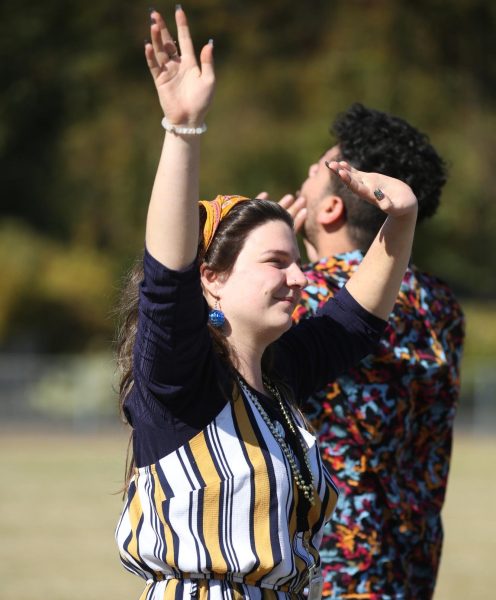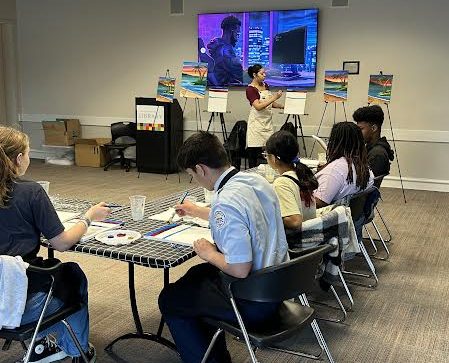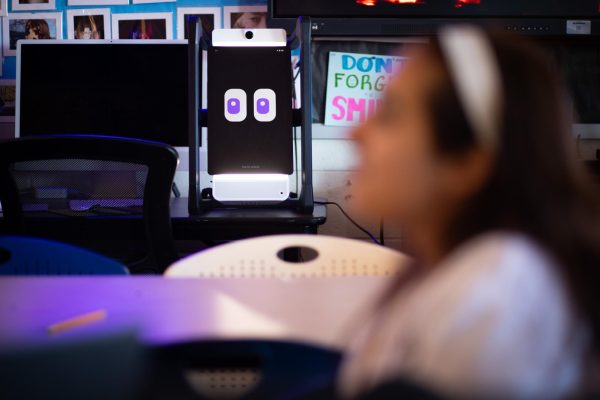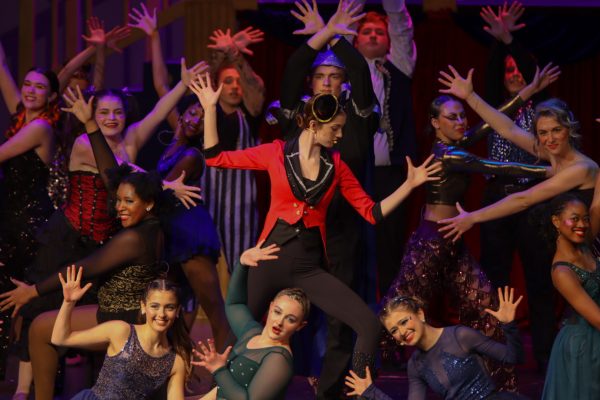Rising Population Leads to Growing Pains
The student population has gone from 2,006 to almost 2,450 in a matter of a year. That’s three to five times more than past increases. So the question is, why?
Well, the answer is, no one knows for sure. Even the principal Rick Parker doesn’t have a clear answer, but he thinks that the increased popularity of the International Baccalaureate (IB) program and new development may be major factors.
“I don’t really have any one reason,” Parker said. The ones I think of are people who like the IB program and they like the feel of East Meck. They like the rigor of the classes but they can get a smaller school and a very community down-home feel at East. It could also be the building of the different areas around here that has maybe increased our enrollment a little bit from different neighborhoods.”
Other staff members seem to agree and there’s evidence to support both ideas. People often look at the 800-plus freshmen and cite them as the root cause of our growth, but before they were the sophomores who numbered more than 700 students. If more people are moving into Charlotte, this might explain the larger numbers as of late. There’s hard evidence supporting the IB program theory. More than 400 freshmen are in it and IB students make up more than 60 percent of the entire student population.
Freshmen growth may be one reason, but IB coordinator Heather Hays says the growth is not just with the underclassmen.
“Every year the IB program has expanded,” Hays said. “Because we have the IB Career-related Program students that would have previously left East because the IB diploma program didn’t fit their goals now have the ability to stay and explore more career-focused aspirations and a less academically overwhelming course instead.”
With the increase in the number of students and East Meck becoming more popular has come
a host of growing pains that came with it. Among the issues are the heavy traffic in the 5000 and 4000 buildings, homecoming tickets selling out a week before the event, five lunches still being required because too many people can’t be in the cafeteria at once, and most notably, a Chromebook shortage earlier this year.
For about the first two weeks of school, many students had to resort to doing digital work on their phones. Eventually, the school received a new shipment of Chromebooks and now has enough for every student to get one. “One” is the keyword.
“Each student will only get one Chromebook for the whole year,” technology coordinator Susie Austin said. “That’s now a policy in the CMS handbook.”
Last year students were only allowed to take their midterms and finals on school-issued Chromebooks. On top of that, Austin also said that the school would no longer be able to waive fees for Chromebook repairs. So unless you want to have to wait for a make-up day, if you have a perfectly functioning Chromebook, then make sure to keep it that way.
Aside from Chromebooks, there’s also not enough space. In buses, there have been reports of students having to sit three to a seat.
“I think the seating capacity is about 48 and we have like 53 people,” sophomore Maran Gieser said. “It gets really hot and hard to find a seat. I’m at the 600 halls for the fourth block and sometimes I’m the one sitting three to a seat.”
According to the bus rosters, there are currently no overcrowded buses, but there are at least three accounts from students of people having to sit three to a seat, which would be a safety hazard. It’s possible that the bus roster does not take into account bus passes, which authorize students to get on a different bus than they were assigned.
Meanwhile, in classrooms, there are teachers who teach classes of up to 37 students. Nicole Halbeisen is a new teacher at East and has had to work harder to handle the larger classes.
“I’m used to large classes. But I’ve had a harder time since I usually have a bigger space to have them in,” Halbeisen said. “So that’s really been the most stressful part but it is even more difficult to keep up with grading when you have a lot of students as well.”
Aside from just keeping up with grades, Halbeisen has also had trouble making her usual teaching style work for such a large class.
“I’m also a very hands-on teacher. I like to be able to work one on one with students. But with so many, it’s sometimes hard to get to everyone and be able to address their concerns, but I do try. It just takes a lot more energy to get there,” Halbeisen said.
But even with so many issues, Halbeisen is glad for the growth.
“I do get to know a lot more students with larger classes,” Halbeisen said, “and being new to East I don’t know the student population yet so it’s nice to be able to get to know a lot more at once. I’ve always enjoyed teaching seniors, so knowing that I’m able to help more seniors during this class and get them ready for wherever they’re going after high school has been very rewarding. So I like doing it for as many students as possible.”
Another supporter of the growing population is assistant principal Kathryn Bauer,
“To talk about clubs, you’ll have way more clubs because you have more people that can run the clubs and more interests,” Bauer said. “In terms of sports, you have more people that might want to play. Like last year, we didn’t have a JV football team. The population has grown so we’re able to have more sports teams. I think with the growth of the IB and AP program we’re able to offer more courses because the interest is there.”
A positive approach to the growth is helpful since the student population is projected to grow to around 2,900 next year. It’s only an estimate and is more likely to go down than up, but Parker thinks the school should be able to handle it and plans to use the trailers again if necessary.
Regardless, it looks like East’s numbers are gonna stay elevated for the foreseeable future.
Your donation will support the student journalists of East Mecklenburg High School. Your contribution will allow us to purchase equipment and cover our annual website hosting costs.










